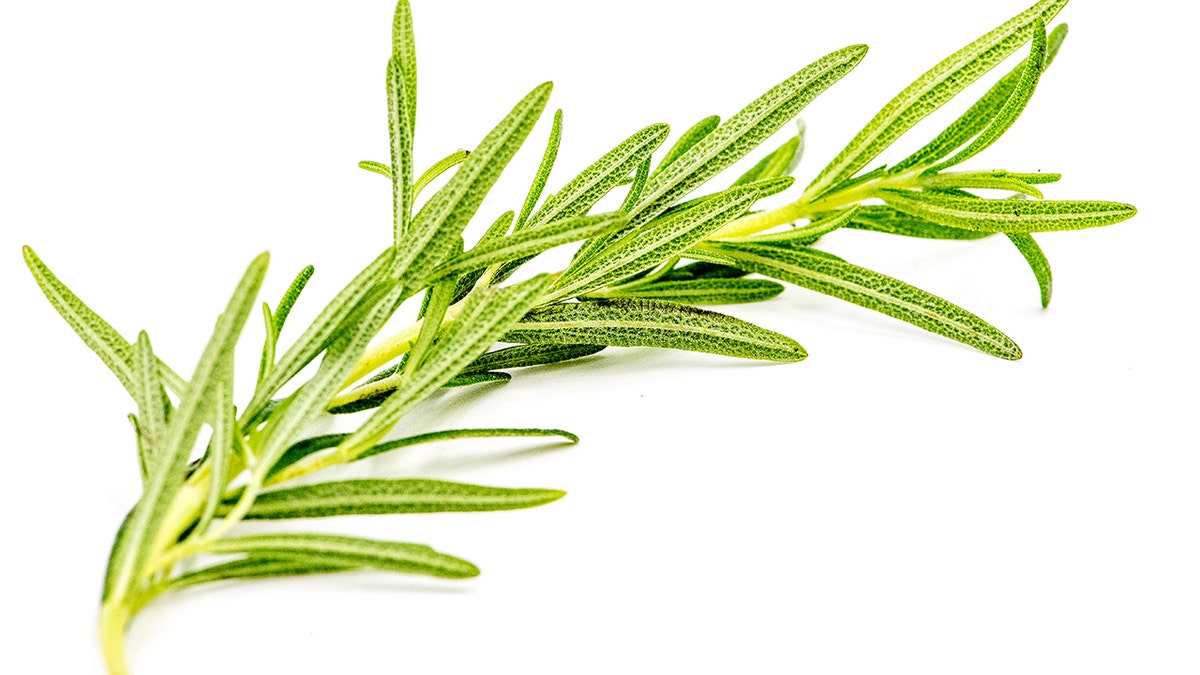Boost longevity with this herb
Jiaogulan is known as the immorality herb. It’s being studied because it may hold the key to longer life. The Medicine Hunter, Chris Kilham tells us all about it
Windowsill herb plants would seem a perfect antidote to winter’s visual and culinary blandness, except that such plants rarely do as well as billed.
The ideal windowsill herb thrives despite dry air and relatively low light conditions to offer intense aroma and flavor. And it should be a pretty plant in winter.

RADEVORMWALD, GERMANY - APRIL 28: In this photo illustration a young woman smells a rosemary on April 28, 2020 in Radevormwald, Germany. (Photo by Ute Grabowsky/Photothek via Getty Images)
Those criteria rule out mint, which is too gangly; basil, which wanes in anything less than summer’s heat and light; and chives, which are too mild, with just one picking decimating the plant.
TWO MEDITERRANEAN HERBS
Two herbs do fit the bill for intense aroma and flavor, and beauty. They are... (drum roll)... rosemary (Salvia rosmarinus) and bay laurel (Laurus nobilis).

LOS ANGELES , CA - MARCH 22: Rosemary in studio on Monday, March 22, 2021 in Los Angeles , CA. (Mariah Tauger / Los Angeles Times via Getty Images)
Both are Mediterranean plants that thrive where winters are cool but never frigid. A sunny window in a cool room is ideal, but both will do fine under less than ideal conditions.
For rosemary, keeping the plant happy and alive means, above all, maintaining a moist soil. Check the soil regularly, because rosemary’s stiff leaves don’t wilt to show their thirst. Of course, you don’t want to drown the plant either, a condition best avoided with a potting mix containing a quarter or more, by volume, of perlite, vermiculite or sand.
The white, mealy coating on rosemary’s leaves gives the plant a grayish cast, as if it’s covered with dew. Perhaps this dewy look and the wild plants’ proximity to the sea is what prompted the ancient Romans to call the plant Ros Marinus ("dew of the sea"), the origin of rosemary’s older generic name, Rosemarinus.
KAMALA HARRIS SAYS NEW SPACE POLICE WILL FOCUS ON CLIMATE CHANGE
Even if rosemary were a homely plant, it would be worth growing for its scent, which it’s eager to release from resin glands on its stems and young leaves. Set a potted plant near a doorway or a rocking chair, where, with the pass of your hand, you can conveniently stir up a cloud of balsamic aroma into the air.
The taste of rosemary is potent, so only a small amount is needed for flavoring. When I need some, I just snip off a few sprigs, which also keeps my plant tidy and shapely.
Bay laurel, for its part, sports broad, dark, evergreen leaves, and a freshly picked leaf needs more coaxing than rosemary to give up its scent. But what a wonderful scent it is — much richer than what you’ll sniff from dried leaves out of a jar.

BRUNSWICK, ME - SEPTEMBER 24: Dried turkish bay leaves in one glass, left, and fresh bay laurel leaf from Christine Burns Rudaleviges tree on Thursday, September 24, 2020. (Staff photo by Brianna Soukup/Portland Press Herald via Getty Images)
Cooked, its flavor readily infuses soups, tomato sauce, stews and other dishes. Freshly plucked, you’ll need to really crush a leaf to release its aroma.
REGULAR BUT MINIMAL CARE
Rosemary or bay laurel are attractive whether grown as informal shrubs or trained to the form of small trees. Pruning off all growth except for a single, vertical stem, then repeatedly pinching off the tip of that stem and any branches that develop creates a small tree out of either plant.

Variety of fresh kitchen herbs coriander. sage. thyme. rosemary. laurel and mint in a cardboard boxs on wooden brown background. copy space. Italy. Europe. (Photo by: Eddy Buttarelli/REDA&CO/Universal Images Group via Getty Images)
Such "standards," as miniature trees are called, can be anywhere from 2 feet high on up, depending on the height at which you pinch out the initial, vertical stem. Over time, that stem will thicken to become a woody trunk. (Unpruned, bay laurel can grow to become a 50-foot-tall tree!)
CLICK HERE TO GET THE FOX NEWS
With care and regular pruning, a potted bay laurel or rosemary plant can live for decades. Refresh the soil every couple of years by repotting the plant to a larger pot or slicing the root ball to reduce its size, then putting it back in the same pot with new potting soil in the space opened up.
For a treat (for your rosemary or bay laurel plant), move it outdoors in spring to bask in sunlight and fresh air for the summer. Your plants will appreciate it, and you’ll appreciate the plants for their beauty and the flavoring and aroma they offer, especially when you move them back indoors in late fall.

